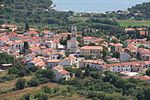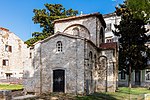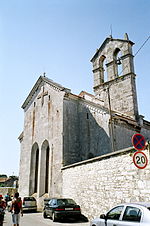Stadion Aldo Drosina

Stadion Aldo Drosina (Italian: Stadio Aldo Drosina) is a multi-use stadium in Pula, Croatia. It is currently used mostly for football matches and is the home ground of NK Istra 1961 and formerly NK Istra. The stadium has a capacity of 8,900. From March 2009 to January 2011 the stadium underwent a major reconstruction. The west stand was completely demolished and redesigned, and a roof was added over the west stand. New seats replaced bench seating all around the stadium, and the three existing stands were cleaned up. On 9 February 2011, Croatia hosted the Czech Republic in an international football friendly for the inaugural match to open the stadium. The match finished with a 4–2 win for Croatia. The stadium is named after Aldo Drosina (1932–2000), a noted football player and coach from Pula.
Excerpt from the Wikipedia article Stadion Aldo Drosina (License: CC BY-SA 3.0, Authors, Images).Stadion Aldo Drosina
Ulica Marsovog polja, Grad Pula Mjesni odbor Gregovica (Pula)
Geographical coordinates (GPS) Address External links Nearby Places Show on map
Geographical coordinates (GPS)
| Latitude | Longitude |
|---|---|
| N 44.86157 ° | E 13.8517 ° |
Address
Stadion Aldo Drosina
Ulica Marsovog polja
52108 Grad Pula, Mjesni odbor Gregovica (Pula)
Croatia
Open on Google Maps










